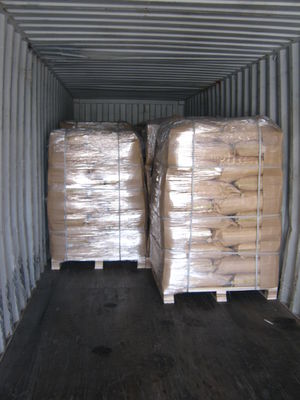DATEM Powder Diacetyl Taratric Acid Esters E472E For Pri-Mixing Bakery
Product Details:
| Place of Origin: | Guangzhou |
| Brand Name: | CARDLO |
| Certification: | ISO,HALAL,KOSHER |
| Model Number: | DATEM |
Payment & Shipping Terms:
| Minimum Order Quantity: | 1MT |
|---|---|
| Price: | USD2000-3500/MT |
| Packaging Details: | 25kg/Bag |
| Delivery Time: | 5-8 work days |
| Supply Ability: | 3000 MT per month |
|
Detail Information |
|||
| Properties: | Emulsification,Dispersion, Stability, Defoaming And Starch Anti-aging Properties | Application: | Bread,Ice Cream, Milk Powder, Etc |
|---|---|---|---|
| Color: | Off-white To Light Yellow Powder | Pacakage: | 25kg/Bag |
| EC: | E472e | Purity: | Min 99% |
| Highlight: | DATEM Powder for Bakery,99% Purity DATEM Powder,Bakery Raw Material DATEM Powder |
||
Product Description
DATEM Powder Diacetyl taratric acid esters E472e for Pri-mixing Bakery powder
What is DATEM?
DATEM is a non-ionic emulsifier with good flowability and HLB value of 8-10, which is milky white / light yellow solid powder and easily soluble in hot water. DATEM has functions such as emulsification, dispersing and anti-retrogradation, and is usually used as O/W emulsifiers.
| Appearance | off-white to light yellow powder |
| Odour | Sour, Acetic Acid, Vinegar |
| EC No | E 472e |
| Iodine Value | Max 3 |
| Dropping Point | Approx.38 C |
| Acid Value | Max 62-76 mgKOH/gm |
| Saponification Value | 380-425 mgKOH/gm |
| Heavy Metals (as Pb) | Max 10mg/kg |
| Arsenic | Max 3 mg/kg |
| Cadmium | Max 1 mg/kg |
| Mercury | Max 1mg/kg |
| Lead | Max 2 mg/kg |
Origin
DATEM is a food additive that is commercially produced from mono- and diglycerides derived from vegetable oils and/or fats that have been esterified with organic acids.
Function
It is used in bread, buns and many other yeast-leavened bakery products at levels of 0.2–0.6% (based on flour weight). DATEM possesses excellent dough strengthening properties due to its ability to adsorb at the gas/liquid interface of dough and stabilize the foam structure trapped by the gluten matrix and prevent gas bubble coalescence.So, DATEM enhances gas (CO2) retention and improves tolerance to shocks in case of mechanical abuse during final proofing and baking.
Due to its anionic nature, DATEM also has the capacity to interact with gluten proteins, promoting protein aggregation.
Commercial production
DATEM are composed of:
- Glycerol derivatives esterified with edible fatty acids, and
- Mono and diacetyl tartaric acids.
There are two different processes needed for the production of these species that make up DATEM:
- The esterification of mono- and diglycerides with tartaric and acetic acids in the presence of acetic acid anhydride.
- The reaction of diacetyl tartaric acid in the presence of acetic acid with mono- and diglycerides. First, the diacetyl tartaric acid is produced from the reaction of diacetyl tartaric acid with acetic acid. The acetic acid generated in this reaction has to be removed by distillation. The final reaction with monoglycerides is possible once acetic acid is removed.
![]()
Application
For ease during scaling and handling, DATEM is usually sold as a powder. The powder form also allows for a cost-effective logistics between supplier and bakery and a lower carbon-footprint in the bakery supply chain.
Properties of commercial DATEM include:
- Melting point: about 45°C. True melting point depends on the chain length and saturation of the fatty acids present in the molecule)
- Powder with 2% moisture (max)
- Purity indicador (total tartaric acid content): min. 10, max. 40%
- Solubility in water at 20°C: dispersible
- Solubility in vegetable oils at 20°C: partially soluble
- HLB value: 9–10 (excellent oil-in-water emulsifier)
- Amylose complexing index (crumb softening ability): 49 (fair)
- Synergistic ingredients: SSL, CSL
In practice, DATEM may help:
- Reduce levels of vital wheat gluten
- Increase water absorption slightly
- Decrease amount of yeast needed for optimum dough expansion during oven spring
- Increase dough tolerance to over-proofing caused by unexpected line stoppages







